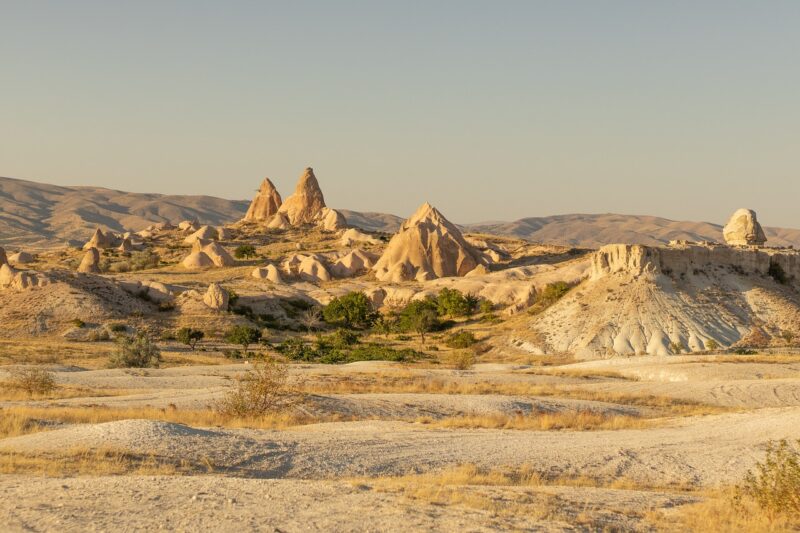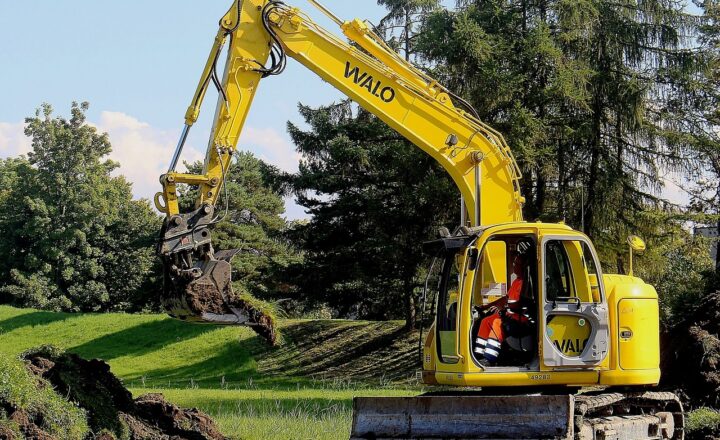The Secret Underground City Built to Shelter a Civilization in Cappadocia
November 15, 2024

Cappadocia, a region in central Turkey, is renowned for its otherworldly landscapes, fairy chimneys, and rich history. However, beneath the surface lies a mystery that has fascinated historians and explorers alike: a vast network of underground cities, created to shelter ancient civilizations from invasions and harsh weather conditions.
This article delves into the secrets of Cappadocia’s underground cities, exploring their origins, construction, purpose, and the incredible stories that emerge from this subterranean world. Join us on a journey from the surface to the depths of Cappadocia, where time stands still, and echoes of the past whisper beneath the earth.
1. What Are the Underground Cities of Cappadocia?
The underground cities of Cappadocia are intricate networks of subterranean tunnels and chambers carved into the soft volcanic rock of the region. These cities date back to ancient times and served primarily as shelters for the local populations during conflicts and natural disasters. The most famous of these cities is Derinkuyu, which is believed to have housed thousands of inhabitants during its peak.
The cities comprise extensive passageways, living quarters, storage facilities, kitchens, and even religious spaces, showcasing the advanced engineering skills of their builders. Most of these cities were constructed around the 8th century BCE and continued to be used well into the Byzantine period.
2. The History Behind the Underground Cities
The history of Cappadocia is marked by invasions, notably by the Romans, Seljuks, and Ottomans. The need for refuge during these tumultuous times led to the development of underground cities. The early inhabitants of the region sought safety from marauding armies and harsh winters, prompting the creation of these extensive underground networks.
While the exact origins of the cities remain uncertain, archaeological evidence suggests that they served as safe havens for many generations. Pottery, tools, and even remnants of ancient food have been discovered within these cities, offering a glimpse into the daily lives and cultures of their creators.
3. Architectural Wonders: How the Cities Were Built
Cappadocia’s volcanic tuff rock is relatively soft, making it easier to carve than other materials. Ancient craftsmen used simple tools to create extensive underground complexes. The cities were designed with multiple levels, with Derinkuyu reaching depths of up to 60 meters (197 feet) and consisting of at least eight levels.
Each level was engineered with sophisticated ventilation shafts, water storage, and escape routes, illustrating an advanced understanding of engineering concepts. Massive stone doors served to seal off entry points, protecting inhabitants from potential threats. The ingenuity of the construction ensures that much of the overall structure remains intact despite the passing of centuries.
4. Daily Life in the Underground Cities
Life in the underground cities was challenging but remarkably advanced for its time. Residents crafted cozy chambers for sleeping and gathering, stored grains and other provisions in underground storage rooms, and utilized communal kitchens to cook meals.
Religious observances undoubtedly occurred, with chambers designated as places of worship where the community could come together to practice their faith. Continuous maintenance was required to keep the underground cities functional, from the installation of new ventilation shafts to the upkeep of living quarters.
The presence of underground city facilities illustrates how civilizations could survive for extended periods away from the surface, and how community bonds were strengthened by shared resilience.
5. The Mystery of Cappadocia’s Underground Cities
Despite the extensive exploration of some underground cities, much remains unknown about the full extent and purpose of these subterranean networks. There are theories suggesting that not all tunnels were used solely for habitation. Instead, it is believed that they may have linked to other cities or served various functions like trade routes or escape routes during times of threat.
Local legends enrich the mystique surrounding these cities. Some tales speak of hidden treasures, while others recount stories of hidden societies that lived within the depths of the earth for centuries. The cities themselves have become not only archaeological sites but also repositories of folklore, inspiring countless stories and adventures.
6. Visiting Cappadocia’s Underground Cities Today
Today, Cappadocia’s underground cities attract countless visitors seeking to explore this enchanting and historic environment. Derinkuyu and Kaymaklı are among the most popular underground cities that are open for public exploration, showcasing just a fraction of what lies beneath.
When visiting, tourists can wander through narrow passageways, marvel at the engineering feats of ancient civilizations, and discover the intriguing stories behind each city. Guided tours offer insights into local history, folklore, and the significance of these structures in shaping the region’s culture.
For those intrigued by history and archeology, a walk through these underground cities is a glimpse into the resilient spirit of humanity and the lengths to which people would go to seek shelter and safety.
Conclusion: Embracing the Secrets of Cappadocia
Cappadocia’s underground cities stand as a testament to the remarkable ingenuity and survival instincts of the civilizations that once thrived in this region. As we continue to uncover the mysteries of this subterranean world, we gain a deeper appreciation for humanity’s capacity for resilience and adaptability. The story of Cappadocia is far from over, as new discoveries continue to emerge, shedding light on a past that remains both fascinating and vital to understanding our own history.
Whether through exploration, storytelling, or preservation, the underground cities of Cappadocia invite us all to engage with their secrets, reconnect with history, and rethink our understanding of the ancient civilizations that came before us.







